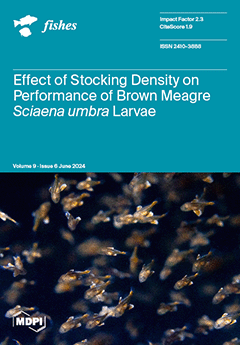Cadmium (Cd) is a common environmental pollutant that accumulates mainly in the kidneys and thus endangers the physiological health of aquatic animals. Selenium (Se) is a natural antidote to heavy metals that antagonises heavy metal toxicity and enhances the antioxidant capacity of organisms.
Lactobacillus plantarum (
L. plantarum) can reduce the toxicity of heavy metals through adsorption, reduction and metabolism. Studies have confirmed that the biological synthesis of Se nanoparticles (Bio-SeNPs) using bacterial microorganisms is simple, safe and less toxic than the synthesis of inorganic and organic Se, but the effect on Cd-induced immunosuppression is un-known. One hundred and eighty
Bulatmai barbel (
Luciobarbus capito: L. capito) plants were randomly divided into control (C), Cd and Cd + Se-enriched
L. plantarum groups (S1L1-Cd) and fed for 28 days. The analysis methods included histopathology, test kits, transcriptomics and real-time quantitative PCR. The addition of selenium-enriched
L. plantarum significantly attenuated cadmium-induced pathological changes such as glomerular atrophy, detachment of renal tubular epithelial cells, mild swelling, and interstitial inflammatory cell infiltration. Cd stress can lead to significant decreases in RBC, HCT, WBC, LZM, C3, and IgM levels, and the addition of Se-enriched
L. plantarum can significantly reverse the changes in these indicators. Transcriptomic analysis revealed 488 DEGs in the Cd groups, 301 of which were upregulated and 187 of which were downregulated. There were 1474 DEGs in the S1L1-Cd group, of which 720 were upregulated and 754 were downregulated. In addition, GO enrichment analysis revealed that the biological regulation of the most differentially expressed genes involved metal ion binding, ATP binding and nucleotide inclusion. KEGG enrichment analysis revealed six of the most enriched pathways: oxidative phosphorylation, Huntington disease, retrograde endocannabinoid signalling, natural killer cell-mediated cyto-toxicity, the IL-17 signalling pathway, and leukocyte transient migration. Moreover, we selected 12 DEGs for qRT-PCR, which showed that the qRT-PCR results were consistent with our RNA-Seq results. Our results suggest that Se-enriched
L. plantarum can enhance immunity and alleviate Cd exposure-mediated immunosuppression in
L. capito.
Full article





